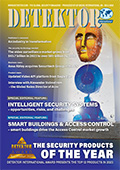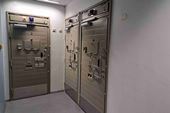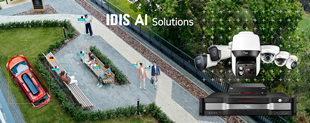The analysts suggest that the electronic system segment is expected to capture ~52% of market share in 2028. Electronic systems use radar, sensor, infrared, and GPS technologies to transfer electromagnetic signals to navigate and track the direction and speed of drones. These systems capitalise on a diverse range of state-of-the-art technologies to effectively detect, trace, identify, and mitigate drone threats. Radar systems are utilised to precisely locate drones and monitor their movements in real-time. Concurrently, radio frequency (RF) detection and jamming technologies disrupt communication links between drones and operators, compelling drones to return to base.
Detection and disruption applications most widely deployed
The detection and disruption segment accounted for the largest share of ~80% of the anti-drone market, by application, in 2028. Detection and disruption systems work in two stages. In the first stage, the system, with the help of sensors or radars, detects drones, and in the second stage, with the help of an RF jammer or a laser beam, the unauthorised drones are disrupted. This application works towards developing systems that integrate diverse technologies and strategies to not only identify potential threats posed by drones but also neutralise them. Detection methods encompass radar and radio frequency (RF) sensors, which provide information about drone location and communication emissions. Acoustic and optical sensors detect drone sounds and visuals, aiding in real-time tracking. Infrared and thermal sensors pick up heat signatures even in low-light conditions, while Lidar creates 3D maps for identifying low-altitude drones.
Ground based platforms hold largest share
The ground-based segment accounted for the largest market share in 2028. A ground-based system tailored for countering drones is a specialised solution crafted to identify, trace, and neutralise unauthorised or potentially harmful drone operations. One variation of this system utilises Radio Frequency (RF) Jammers, emitting robust signals on the drone’s control frequency to disrupt its communication link with the operator. Another variant relies on Radar Systems, harnessing radio waves to spot and monitor drones, offering crucial data about their altitude, velocity, and flight path. Equipped with cameras and optical sensors, optical systems visually spot drones by scrutinising their dimensions, configuration, and motion characteristics.
Military and defence
The military and defense vertical is expected to capture ~68% of market share in 2028. UAVs or drones have become an integral part of military and defence operations. Developed countries such as the US and the UK have armed drones in possession, which are used to carry out airstrikes during a war. Presently, countries are also giving importance to adopting counter-drone measures to monitor terrorist activities, which would boost the demand for anti-drone systems in the near future.
America takes the leading share
Americas held the largest share in the anti-drone market in 2028. The Americas is a major contributor to the growth of the anti-drone market. The Americas is a home to a number of critical infrastructure assets, such as airports, power grids, and government facilities. These assets are increasingly being targeted by drones, both for malicious purposes and for espionage. In such instances anti-drone systems can help to protect these assets from attack.
Also, in 2022, Aerovironment, Inc. from the US, received a USD 20 million contract from the US Department of Defense Foreign Military Sales (FMS) to provide Puma 3 AE small, unmanned aircraft systems (SUAS), Contractor Logistics Support (CLS), initial spares packages, and training to two allied nations.
In addition the growth in the region can be attributed to the presence of several key players based there, such as Airbus Defence and Space, Battelle Memorial Institute, Department 13 International Ltd., Detect, Inc., Lockheed Martin Corporation, Fovea Aero Systems LLC, Gryphon Sensors, Dedrone Inc., Northrop Grumman, Raytheon Technologies Corporation, Boeing, and Theiss UAV Solutions, LLC.















